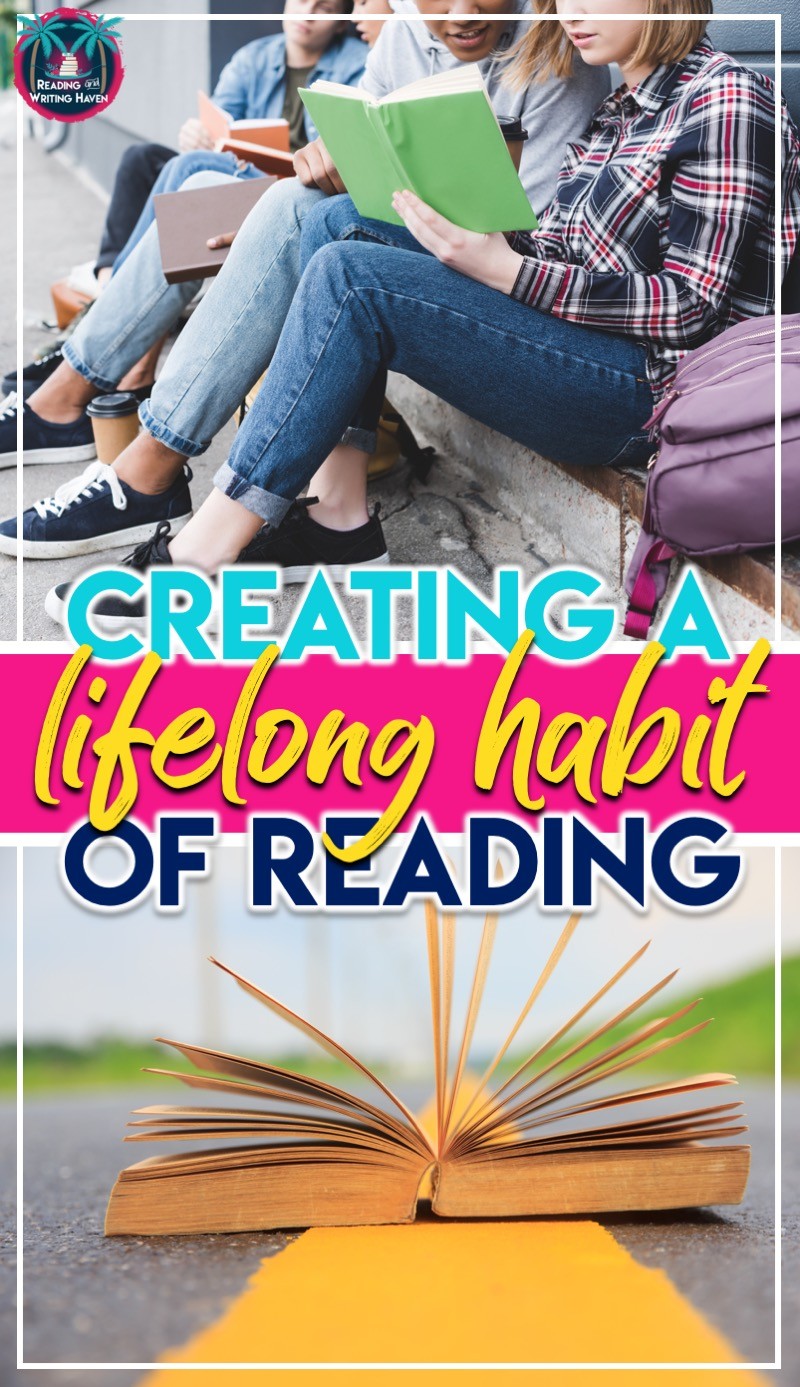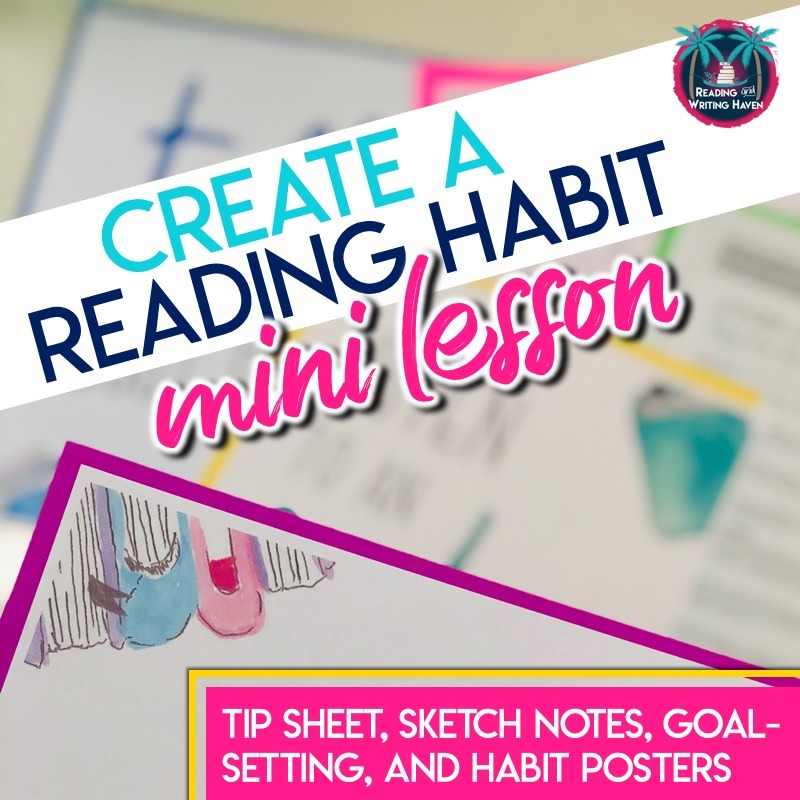Help Students Develop a Reading Habit: 8 Things You Need to Know
Knowing how to help a reluctant student create a habit of reading is a game changer. Cultivating a reading lifeone of the most important lessons we can share the next generation. Students who read more know more. When we know more, we can do more. As Carol Jago, author of The Book in Question, challenges, “If we are not helping students to become more confident, habitual readers, I don’t know what business we are in.”
A couple different stakeholders might be interested in this topic. If you’re a parent who is looking for ideas to help your child at home, welcome! You’ll find some takeaways here.
If you’re an educator, these ideas can apply to the classroom as well. Classroom teachers view reading instruction from different angles. We teach students how to select books, how to read critically, how to talk about what we are reading, and how to develop stamina, among other lessons. In this post, I’m specifically addressing the concept of helping students find books they love in order to increase reading volume and develop a lifelong habit of reading for enjoyment.
As I sat down to write this post, I reflected. How did I learn to read habitually? How have my children adopted this practice?So, I asked them. What makes you want to read every day? What have you learned that you would share with others?
From the Eyes of a Child
My almost eight-year-old answered, “I read books I like. Books I enjoy make me want to read all the time. I like Minecraft books, war books, nonfiction books about animals, graphic novels, and books that make me laugh like Captain Underpants and Dogman.”
As a parent and a teacher, it’s easy to get caught up in our own biases. We tend to push children toward the books we think hold more value, but in the process, we can cause students to dislike reading, which pushes them further away from our end goal.
I don’t love Captain Underpants or Minecraft. I have to force myself to sit down and read these books with my child…because he loves them, and I want him to love reading. While I don’t enjoy potty humor and I would be okay if I never had to read another tutorial about how to build a bridge in a fantasy world, the conversations and laughter that happen when I read these texts with my son are a gift.
You see, creating a habit of reading is so much more about the child than about us.
Just a reminder to anyone who works with kids: graphic novels have great value; audiobooks have great value; stop telling kids (in so many words) that when they reach a certain age they have to read a certain kind of book. – Sam Bloom @sibloom24
Then, there’s my kindergartener. I also asked her, What makes you want to read? She loves reading me the books she makes at school. She says she likes sounding out the words. “I like reading easy books…and hard ones, if I’m in a good mood…because I get to sound out words, and I want to be able to read better.” Helping your children or students to value reading books that are both easy and challenging in different situations ultimately allows them to view reading and its purpose through a broader lens.
If you’re interested helping students create a habit of reading, begin by asking the kids. Their responses will give you insights about where to begin.

Creating a Habit of Reading
Life is busy. Finding time to read can easily be pushed aside.
I don’t always feel like saying yes when my children ask, “Mom, can you read to me?” Sometimes I’m in the middle of what I consider very important work. But really, what can be more valuable than putting that important work aside to make time to read? In doing so, what message am I communicating to my children? Either way, whether I say, “I don’t have time right now” or “Yes, of course,” I’m sending a message. Making time to read is critical.
Reading is good for the brain. It introduces us to new ideas, invites us to solve problems, makes us better writers, improves our conversational skills, challenges our imaginations, and builds our background knowledge. For these reasons and more, creating a habit of reading is worth the effort.
But how? Let’s explore some specifics. Share these with the children and students in your life!
1. Make Time
Decide when you are going to read, and – if possible – make it the same time each day. Right after school? On the bus? During study hall? Before bed? While waiting for dinner?
Letting kids read what they want, and giving them time to read the books, is pretty much the most important thing we can do to help kids find a love of reading. – Colby Sharp
Parents and educators, making time to read to students and children matters. Additionally, making time to model how we ourselves are readers is equally important so that adolescents understand how reading is not just a homework assignment…it’s a life-long hobby.
2. Be prepared.
Always carry a book. Wherever you go, take a novel! It’s so easy to spend all our free minutes on a phone, iPad, or other device. But, if you have a book, those boring minutes spent waiting in the doctor’s office, riding on the school bus, traveling for the holidays, or getting the oil changed can be spent reading.
I love seeing people squeeze books into even the smallest moments they get. The cashier reading a few sentences between customers at the grocery store, the person thumbing through a page while waiting to cross a street. Few feelings better than finding a book you can’t put down. – Clint Smith
3. Make a list.
One of the barriers to a habit of reading is running out of good books to read. When you come across a book that sounds tasty, add it to a running list! Keep the list in a note on your phone so that you always have it with you. Alternatively, use a reader’s notebook insert to keep track of books you’ve already read, ones you’re currently reading, and those that sound intriguing.
This template offers a variety of options and is a fun approach!
4. Reduce distractions.
Television and social media are known for stealing time from reading. Sure, those are fun hobbies, too. If you establish a certain part of the day that you’d like to spend reading, try to eliminate distractions during that time frame. Put your phone away, turn off the television, and find a quiet, relaxing place to read.
5. Abandon books you dislike.
No one develops a habit of reading by continually picking up books they detest. Everyone has different taste, and life is too short to read books that don’t resonate with you. The goal is to find books you don’t want to put down! Visit libraries and bookstores. Talk with your teacher or librarian. Ask adults and peers for recommendations. When you find a book you like, search for similar books to read next. Google “If you liked ____[insert book title, like Harry Potter]__”.
6. Set a goal.
Make it reasonable, but push yourself. For example, “This month, I am going to finish six books.” Or, “This year, I want to read a nonfiction book.” Maybe, “This year, I’m going to talk to my friends about what I’m reading.” And, “I want to journal more about my thoughts as I read.” Tell yourself that if you meet your goal, you’ll reward yourself with a special treat. Just make sure you’re still enjoying it and that it doesn’t feel like a rushed chore.
7. Make it social.
Reading is a social experience. Reading with others – or, at least sharing our reading experiences – is enjoyable. Ask your friends if they’d like to read the same book as you. Schedule some coffee shop meet ups to talk about your books. Share with your family what you are reading. Connect with friends on Goodreads. The possibilities are endless! Just think about your favorite way to socialize, and then brainstorm how you can inject some bookish conversation into that experience.
8. Just enjoy it.
You’re allowed to read simply for the enjoyment of reading. No tests. No worksheets. Full choice. Soak it up. Eat some snacks. Lounge in a hammock. Listen to an audiobook. Read books with pictures. Enjoy the characters. Connect with their struggles. Be transported by the setting and the magic of the story. Above all…just enjoy it.
To develop a habit of reading, we need to fall in love with it. Basically, find a book you are interested in, read it, think about it, and talk about it.
I’m not saying we shouldn’t ever read texts we don’t love. There are times and places for challenging students to read critically, for getting them to analyze literature that is written at a higher level, for showing them how to wrestle with a text. However, in order to go there successfully, we have to instill a solid foundation…one in which students understand themselves as readers, have developed a positive attitude about it, and know they can succeed.
Taking time to create a habit of reading matters. In a fast-paced world, we have to teach students to prioritize a reading life. After all, it plays a considerable role in the type of human we become.
READ NEXT
10 Ways to Create an Inspiring Reading Culture
My Child Hates Reading! 10 Tips to Empower Parents
Why Reading Levels Don’t Work in Secondary, and What to Do Instead
RELATED RESOURCE
Help students to prioritize their reading lives with this lesson. It includes reading habit tips that you can use as a mini lesson, scaffolded sketch notes for students, goal-setting questions, and visually appealing reading habit posters.
